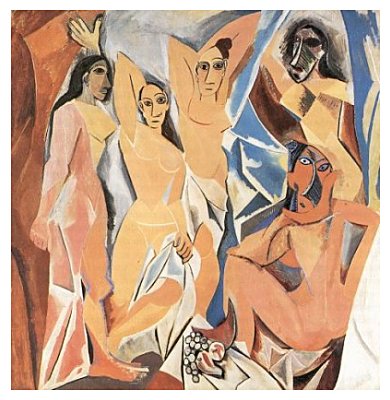The semester has begun . . .
. . . and it's about time it did, Mrs. Meridian would say. She's right, too: I've been going a bit stir-crazy, impatient to get things going with my classes. So, yesterday I met my classes, Comp I and Intro. to Humanities. So far, so good.
A few posts ago, I noted that I was going to use some paintings as the prompts for my Comp students' writing sample. I had no preconceived notions as to what students would choose to write on beyond assuming that at least a few would write on each of the paintings. In thinking back just now, though, I do recall wondering just how many people would write on the Magritte--I assumed that just a couple would. But when I looked at their writing this morning, I was amazed to see that, out of a class of 12 students, no one wrote about the Velazquez (which disappointed me) and 3 wrote about the Vermeer. Everyone else wrote about the Magritte. True--of the three it is clearly the most startling painting, but for me, it's a hard painting to look at for a long time; it's very disorienting and even disconcerting. It makes me want to write about it.
As for the quality of their responses, those varied, of course, but almost all conveyed in their writing a sense of its strangeness. But no one seemed to recognize that what the figure sees in the mirror is what WE see of him--in other words, they felt themselves outside this painting rather than included in it. A couple DID say, though, that it suggests to them how hard it is for them to understand themselves as humans--an indirect insertion of self into the painting's world.
The comments on the Vermeer were not earthshattering in their perceptiveness, but each DID (correctly, to my mind) sense that the painting seeks to pay tribute to the woman depicted, to honor the work she does.
The Humanities class began well as well. What I like about teaching this class is precisely that my students haven't had much collective exposure to the material we cover. Thus, they really get to learn and, even, get excited about what they are learning.
A couple of things I like to tell them the first day by way of introduction: a) that Western culture has not remained static over the centuries; b) that the arts aren't created in a vacuum but are reflections of and responses to the world an artist lives in. I try to make those points by way of asking them to look at these two paintings in their book,
Botticelli's Birth of Venus
and Picasso's Les Demoiselles d'Avignon
and make guesses about the prevailing attitudes of the culture that produced them. Invariably--which I find interesting--when it comes time to talk about the Picasso they offer guesses about his biography (I have yet to have a student try to do that with Botticelli). Yet, I conclude the discussion by saying, these very different paintings are products of something called Western Culture . . . and that we'll spend the semester seeing the progression of ideas that gets us from Botticelli to Picasso and beyond.
Oh, well. THEY find it pretty cool, at least.
Technorati tags:
Painting, Teaching































2 comments:
I REALLY like the "Not to be reproduced" painting. That is just too cool. Could I suggest "Guernica" as well?
The mere fact of Powell not wanting to give his let's go to war speech in front of it surely merits some attention and might make for good discussion. Besides that, the picture alone speaks a thousand words and renders you silent all at once.
peace!
Another thing, I wouldn't have chosen the other two paintings either simply because they fail to strike me in the way the Magritte one does. Sure, there are things you could write about but I could see someone actually tying in what Theodor Adorno (and Horkheimer) wrote about the Culture Industry into the Magritte picture and the very question of what is lost in mechanical reproduction and what is gained. Anyhow, have you thought of doing something on comics and cartoons as art and particularly as tools of subversion?
Or using graphic novels? Food for thought. Peace!
Post a Comment